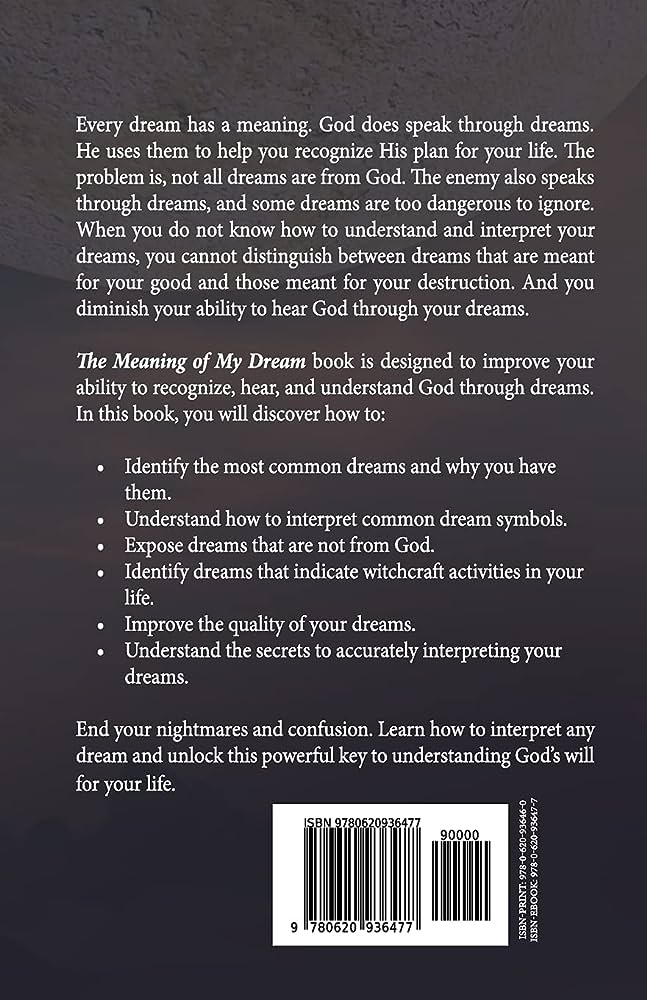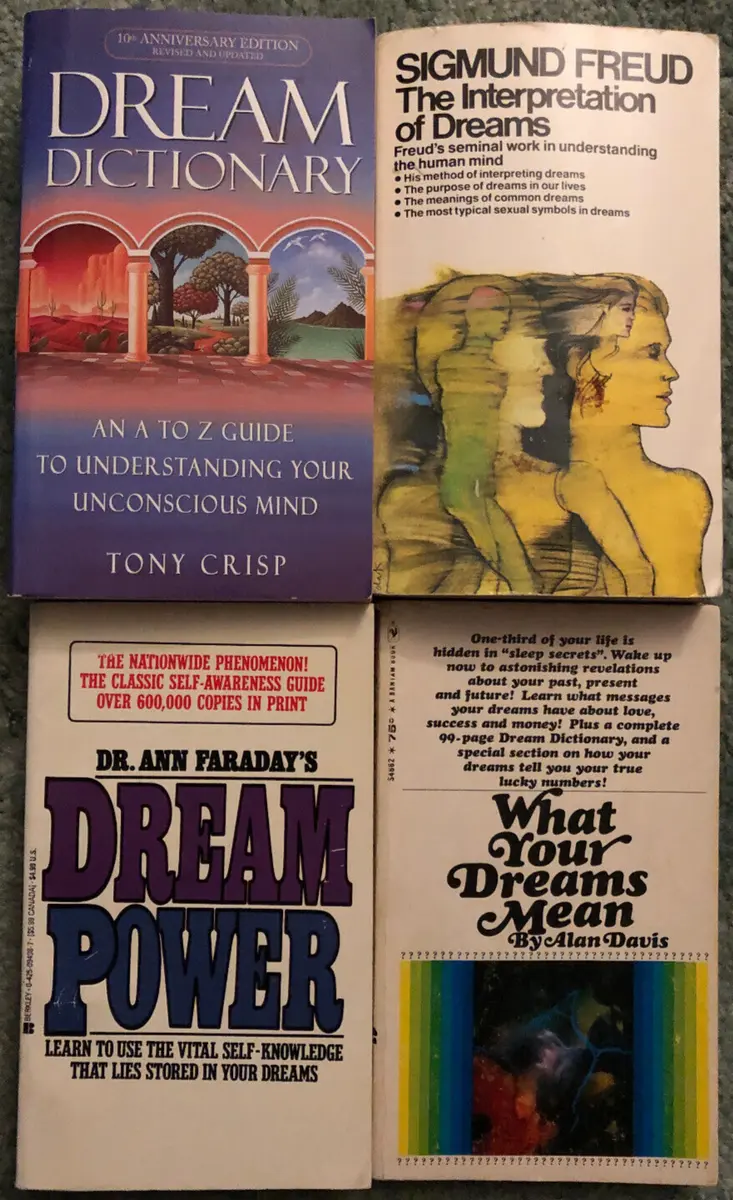Have you ever woken up with vivid images lingering from a dream, leaving you wondering about their meanings? Dreams have long fascinated humans, offering glimpses into the mysterious realm of the subconscious mind. Understanding dream symbols can provide profound insights into our innermost thoughts, emotions, and desires. In this article, we will explore the power of dream symbols and learn how to interpret and understand their significance.
The Science of Dreaming
Before diving into the world of dream symbols, it’s essential to understand the science behind dreaming. Dreaming occurs during the Rapid Eye Movement (REM) sleep phase, where the brain is highly active, and dreams are more vivid and memorable. There are several theories about why we dream, ranging from psychological to physiological explanations. Freudian psychoanalytic theory suggests that dreams are a reflection of repressed desires and unconscious thoughts. On the other hand, Carl Jung’s concept of the collective unconscious proposes that dreams contain universal symbols known as archetypes.
“Dreams are the royal road to the unconscious.” – Sigmund Freud
Types of Dreams
Not all dreams are the same. They can vary in nature and intensity. Ordinary dreams are the most common, comprising a mix of everyday experiences, emotions, and symbols. Lucid dreams, however, offer a unique experience where the dreamer becomes aware that they are dreaming and can sometimes control the dream’s outcome. Nightmares, on the other hand, can be distressing, filled with fear and anxiety. Recurring dreams are persistent themes that occur repeatedly and often carry significant messages.
Decoding Dream Symbols
Dream symbols act as a language of the subconscious. They can be objects, people, animals, or scenarios that hold personal or universal meanings. Common dream symbols include water, flying, falling, teeth, and death. For instance, water often represents emotions and the unconscious mind, while flying symbolizes liberation and freedom. To interpret dream symbols accurately, it’s essential to consider the dreamer’s emotions, experiences, and current life situations, as symbolism can vary from person to person.
Techniques for Dream Recall
One of the challenges in interpreting dreams is remembering them upon waking. Keeping a dream journal can significantly enhance dream recall. By jotting down dream details immediately after waking, the dreamer can capture even the subtlest aspects of the dream. Visualization exercises before sleep, where the dreamer sets the intention to remember their dreams, can also improve dream memory.
Analyzing Dream Themes
Dreams often have recurring themes that reveal patterns in the dreamer’s life. Emotions expressed in dreams can provide valuable insights into the dreamer’s subconscious state. Analyzing dream themes can help individuals identify unresolved issues, hidden fears, and unfulfilled desires, leading to personal growth and self-awareness.
Carl Jung and Dream Interpretation
Swiss psychiatrist Carl Jung made significant contributions to dream interpretation through his concept of archetypes and the collective unconscious. Jung believed that dreams contained symbols that are part of our shared human experience. Archetypes are universal symbols that appear across cultures and hold deep meanings. Understanding archetypal symbols can offer a broader perspective on dream analysis and the dreamer’s psyche.
“Your vision will become clear only when you look into your heart. Who looks outside, dreams; who looks inside, awakes.” – Carl Jung
Interpreting Nightmares
Nightmares can be distressing, leaving a lingering sense of fear upon waking. To cope with nightmares, techniques like lucid dreaming and exposure therapy can be useful. Lucid dreaming allows the dreamer to take control of the dream, transforming it into a less frightening experience. Exposure therapy involves revisiting the nightmare during waking hours to desensitize the fear associated with it. Understanding the underlying fears and anxieties behind nightmares can lead to personal growth and emotional healing.
Lucid Dreaming as a Tool for Understanding

Lucid dreaming is a fascinating state where the dreamer is aware they are dreaming while still immersed in the dream. It offers a unique opportunity to explore the depths of the subconscious mind and gain insights into one’s thoughts and emotions. Techniques for inducing lucid dreams include reality checks, setting intentions before sleep, and keeping a dream journal. Lucid dreaming can be a powerful tool for personal growth and self-discovery.
Utilizing Dream Interpretation for Personal Growth
Dream interpretation goes beyond mere curiosity about dream symbols; it can be a transformative tool for personal growth. By analyzing dreams and identifying recurring patterns, individuals can gain self-awareness and understand their deepest desires and fears. Integrating dream wisdom into daily life can enhance creativity, problem-solving abilities, and emotional well-being.
Cultural and Historical Perspectives on Dream Symbols
Dream interpretation has been a part of human history for centuries. Various cultures and civilizations have had their unique approaches to understanding dream symbols. In ancient cultures, dreams were often seen as messages from the gods, and dream interpreters played significant roles in guiding individuals and communities. Dream incubation practices in Egyptian and Greek temples were meant to seek divine guidance through dreams. Indigenous societies also have rich traditions of dream symbolism and interpretation.
Practical Tips for Interpreting Dreams
While dream interpretation can be enlightening, it is essential to approach it with a balanced perspective. Avoid common pitfalls like relying solely on dream dictionaries for meanings. Instead, trust your intuition and personal associations with dream symbols. Seek professional guidance if you encounter particularly distressing or puzzling dreams that may require deeper exploration.
Frequently Asked Questions
-
Can everyone interpret their dreams?
Yes, everyone can interpret their dreams. Dream interpretation is a personal process that involves understanding the symbolism within the context of the dreamer’s life and emotions.
-
Are there universal dream symbols across cultures?
Yes, some dream symbols, like water and death, have universal meanings across cultures. However, the interpretation of other symbols may vary depending on cultural and personal influences.
-
What if I don’t remember my dreams?
Improving dream recall takes practice. Keeping a dream journal and setting intentions before sleep can help enhance dream memory over time.
-
Can dreams predict the future?
Dreams are not prophetic, but they can reflect subconscious thoughts and emotions that may influence future decisions and actions.
-
How do external factors influence dream symbols?
External factors, such as life events, relationships, and cultural influences, can shape dream symbols and themes.
-
Is lucid dreaming safe for everyone?
Lucid dreaming is generally considered safe for most people. However, individuals with certain mental health conditions should approach lucid dreaming with caution and seek professional advice if necessary.
Conclusion
Unlocking the power of dream symbols offers a profound journey into the depths of the human psyche. By interpreting and understanding dream symbols, individuals can gain self-awareness, find inner healing, and tap into their creativity and problem-solving abilities. Embrace the language of dreams, for within their enigmatic realm lies the key to unlocking the profound wisdom of the subconscious mind.

Greetings and welcome to my corner of the digital realm! I’m Ethan Harrington, a dedicated and passionate professional in the field of therapy psychology. My journey through the intricate landscapes of the human mind, emotions, and dreams has led me to this point, where I’m excited to share my insights, knowledge, and experiences with you. See this

